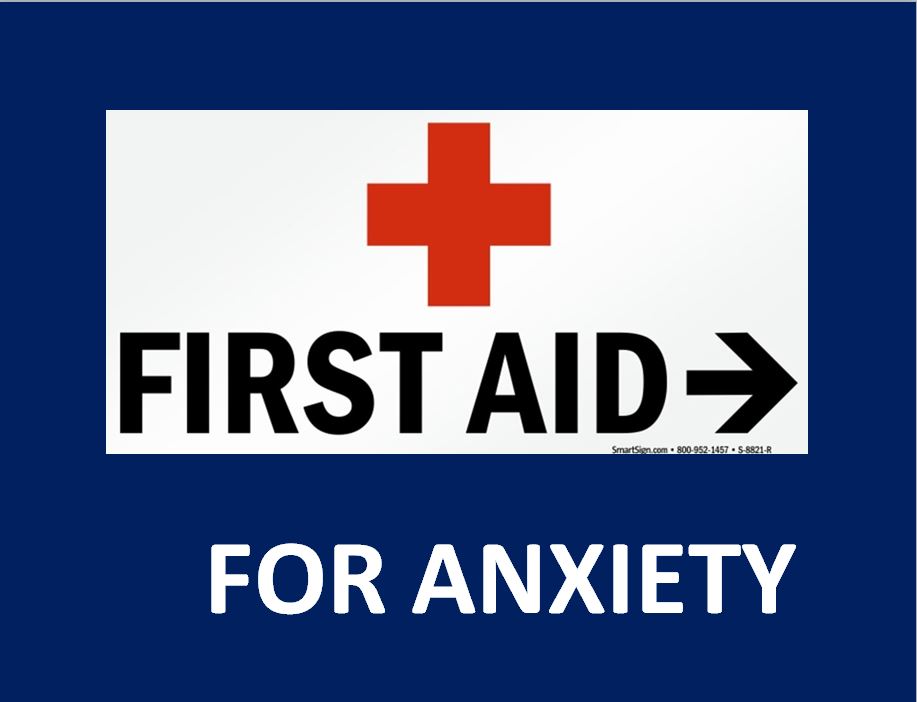 Anxiety is a serious and complex problem for many people. In some cases, successful treatment requires a combination of psychotherapy and medication. For many, however, employing some basic first-aid can render significant and immediate relief.
Anxiety is a serious and complex problem for many people. In some cases, successful treatment requires a combination of psychotherapy and medication. For many, however, employing some basic first-aid can render significant and immediate relief.
Here are four steps which, if followed, can quickly and dramatically reduce the crippling effects of panic and anxiety attacks.
FOUR STEPS TO CALM ANXIETY
- Recognize and Identify that an attack is happening and the source of the distress.
- Stop Exposure to and Withdraw from Toxic Stimulus.
- Begin Deep Breathing Exercise.
- Reflect on perceived threat and reality-test its level of danger.
1) Recognize and Identify Impending Anxiety. The first step to calming anxiety is to recognize that it is happening as soon as possible. The deeper into a panic attack that one gets, the more difficult it is to recover. Everyone has an “organ” of distress that can help you to recognize trouble before it is full blown. This is an area in the body ( jaw, throat, back of neck, chest, stomach, etc. ) when muscular tightness occurs BEFORE anxiety becomes obvious but where an emotional upset is first beginning. (This tightness is not to be confused with the physical symptoms of a panic attack such as sweating, chest pain, palpitations, etc.*) This tightness can be regarded as an alarm to warn a person that trouble is coming unless preventative steps are immediately taken.
2) Stop Exposure to and Withdraw from Toxic Stimulus. When one becomes aware that s/he is under distress, the person must remove themselves from the toxic situation. For example, if one is talking on the phone and distress arises, one needs to end the conversation asap. If a person is talking with another person and becomes upset, s/he must physically withdraw from that person and go to safer place at distance from that distressing person or conversation. Or, if one is watching a disturbing segment of a television show or something on the computer, switching channels or walking away from the disturbing material must be done.
3) Deep Breathing. When one is in a private and at a safe distance from the upsetting stimulus, intentional deep breathing needs to be employed. This technique focuses attention on one’s breathing with the realization that the way one breathes can be controlled and changed by the individual. Taking several slow, deep breaths for the count of 4, holding for 4 and exhaling completely, sends an “all clear” signal to the brain that there is no danger. This signal stops the secretion of stress hormones which can cause the physical symptoms of panic and hits the person’s emotional reset button. https://www.verywellmind.com/abdominal-breathing-2584115
4) Reflect and Reality-Test. As one feels better, and the anxiety level falls, neuropathways to the cortex, which were broken during the emotional upset, are re-established and the person can regain the ability to think and put the recent disturbing incident into rational context. The stimulus which generated the anxiety can be identified and reality-tested as to its severity and imminent threat level. As a result, the person is able to realize that their initial reaction was most likely distorted and exaggerated and reasonable demeanor can be resumed.
The internet is filled with helpful videos and summaries of each of these techniques to further explain and demonstrate their use. With a little practice, a person can become confident that they know how to quickly and effectively handle emotional troubles when they arise and before they become serious. If anxiety attacks become persistent, however, talking to a therapist and even perhaps your doctor is advised.
Rev. Michael Heath, LMHC Fellow AAPC August 3rd, 2019
* It should be noted that in some instances , the physical symptoms of an intense panic attack are indistinguishable from those of a heart attack and thus immediate medical evaluation should be obtained.
Image attribution and acknowledgement : smart Signs.com



